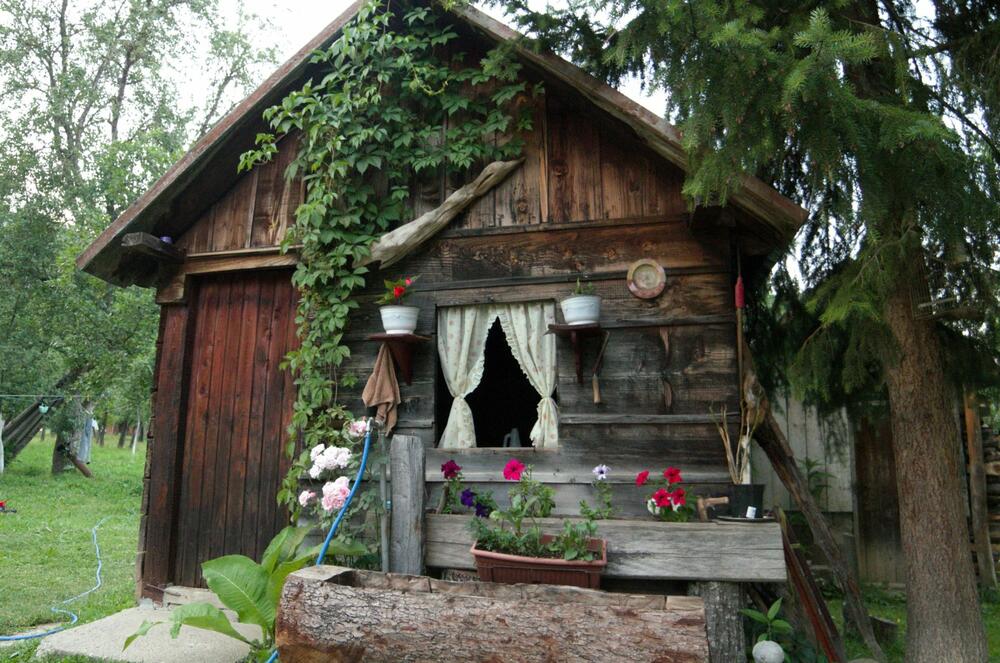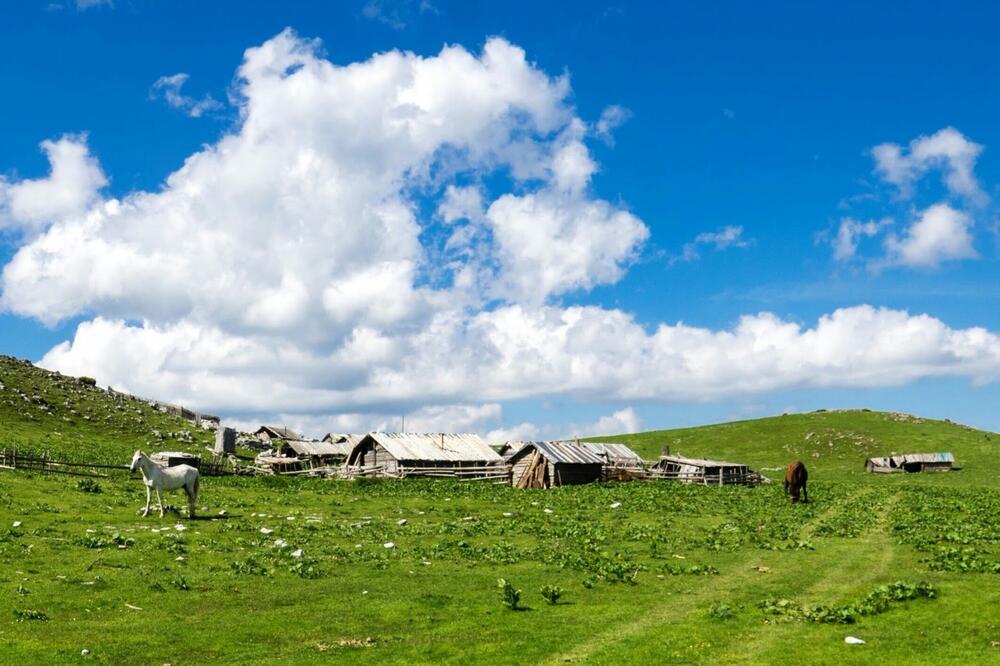Although there is a long process ahead, there is a chance that Globally Important Agricultural Heritage Systems (GIAHS) will include Montenegrin katuns in the same rank of "landscape, customs and products shaped areas" with rice fields in China, part of Spanish olive groves and Italian vineyards.
This is what they hope for in the Regional Development Agency (RDA) for Bjelasica, Komov and Prokletije, the first steps towards that goal, the executive director tells "Vijesti" Jelena Krivčević, have already been made. RRA has already done a lot in the valorization, promotion and protection of the authenticity of temporary mountain cattle settlements. In cooperation with the United Rural Households, at the end of last year, at the Administration for the Protection of Cultural Property, they managed to put the tradition of raising katuns under protection as an intangible cultural heritage. Now it has been taken a step further.
"In cooperation with the FAO/EBRD project that has been working here for several years, we looked for the best solutions and found the GIAHS network. It is a network from the UN system, which recognizes those zones in the world that are shaped by agricultural systems and practices, both in terms of landscape and customs and products. For example, rice fields in China are under their protection, also olive groves in a part of Spain, part of a vineyard in Italy... Our katuns fit perfectly into their story. These are pastoral systems, with specific architecture, special gastronomy, overall tradition and culture that arose on the katuns and has been maintained for centuries", explains Krivčević.
The meeting with the representatives of GIAHS was held a few days ago, and RRA says that the guests left with excellent impressions.
According to them, what contributed the most to this was that they heard about katuns and the specifics of nomadic life firsthand. They told them about their experiences Ivan Karadžić from Durmitor, Radan Božović and Danka Šekularac from Bjelasica, as well as mountain women who are pioneers in rural tourism - Gordana Dulović which rises to Sinjajevina and Ermina Redžematović from the katun below the Hrid lake.
"I think that we as a society do not thank them enough, because they are great workers who live in difficult conditions, and in addition, they faithfully preserve our old tradition, which in the end shaped us all. I, for one, don't know anyone from my generation who didn't spend some time of their childhood in katun. Rather, we somehow forget it quickly. Our hope is the young people who were present at this meeting, but also the 'dragon women' - mountain women, pioneers of rural tourism", says Krivčević.
Money for research and mapping first task
The participants of the meeting were representatives of the Ministries of Agriculture and Economic Development, the Administration for the Protection of Cultural Property, the Expeditio organization that deals with cultural heritage, tourist agencies that bring guests to katuns, representatives of the United Rural Households of Montenegro...
"We have a long way to go, there is a lot to do, this process is neither easy nor quick, but we are all motivated. As we in Montenegro have a shy but visible trend of including katun in the tourist offer, by registering katun families for rural tourism, it was important to us that this tradition be protected and recognized as significant, not only in Montenegro, but also at the international level", explains Krivčević.
According to her, first of all, money needs to be found to conduct research and map katuns in zones for which the RBA does not have data.
GIAHS representatives, she says, were satisfied that a good part of the work had been awarded through previous projects.
He reminds that the Historical Institute of Montenegro and its partners "did a fantastic job for the Kuče Planina".
Similar research is currently underway in Sinjajevina.
"In the region of Bjelasica, Komovo and Prokletije, we have obtained a lot of data through our tourism projects, now we need to systematize them. We are not aware of the jewel that is under our nose, we are not aware of the exclusiveness that we have. We want to deal with the topic of the devastation of Katun, either by the destruction of natural resources, or by inappropriate and unplanned construction. We want to protect important cultural heritage", says Krivčević.

Among the goals of RRA is "tourism in katuns, branding and recognition of katun products as the highest quality and income for families in katuns".
Krivčević states that there are "comparable experiences in Slovenia, Austria and Italy, so there is a place to learn what is not known".
The priority, she says, is also legislation "that will protect the treasure, encourage households to stay in katun and engage in agriculture and tourism".
The tradition of elevation has not been interrupted for centuries
Katuns are mentioned in historical writings as early as the 12th century. In a publication issued several years ago by RRA, it is written that "livestock movements towards the mountains in various periods of history were not interrupted by Roman, Slavic, Venetian, Turkish or any other colonization".
"The lack of grazing meadows was made up for by moving the cattle to the high mountain regions, from May until the snow, so that the cattle could graze there, and the meadows in the village were mowed and the hay was saved to feed the cattle in the winter months... .In many katuns in Montenegro, old marbles can still be found today, as a witness to the fact how important katuns and grazing were at that time. And this is additionally evidenced by the fact that the Montenegrin rulers awarded pastures on the mountains that they had not used until then to the brotherhoods that proved themselves especially well in the battles", writes the publication "Priča o katunim".
Katun huts, which are called differently in different parts of Montenegro (stan, glada, savardak, dubirog), are usually built close to each other. In mountains such as Bjelasica or Komovi, on the Andrijevic side, where there are many forests, they are made of wood. On Sinjajevina, or on the back side of Komovo, where the areas are rugged and without forest, the huts and all the accompanying buildings, and often the cattle pens themselves, are made of stone.
"The thing they have in common is that they used materials that are in the environment, so even though they are made by human hands, they are completely integrated into the environment and do not stand out at all compared to the wild beauty that surrounds them. Katun huts are usually small, with one room and a partially partitioned space that serves as a kitchen," the publication explained.
Bonus video:





